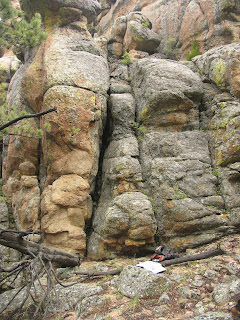We are going a little nuts for pollinators here at the Berry Center. Our native pollinators are absolutely critical to food production, ecosystem functioning, plant and therefore many other types of biodiversity, and they're also in decline (generally speaking). And did you know that June 18-24 is
Pollinator Week?? Stay tuned for Berry Center activities during that week!
We're not talking about honeybees, though honeybees are wonderful for their own reasons. We're thinking about native bumblebees, mason bees, carpenter bees (and other bees), butterflies, moths hummingbirds and other native species. They've evolved with our native plants and predators, and so are well suited for our climate.
Honeybees were imported from Europe, and their species are the ones experiencing colony collapse disorder. But native pollinators are also taking a hit, for a number of reasons known and unknown (pesticide use? land use changes leading to habitat loss? reduced use of native flowers in landscapes?).
We decided to do our part to help protect their populations.
Step 1: Soak up as much knowledge as possible
So we're learning all that we can about how to provide for native pollinators, and a cool resource is in the works - I'll upload that when it's finished! Some of our main resources include:
Attracting Native Pollinators published by the
Xerces Society, an incredible organization that does great work on pollinator conservation. This book is absolutely wonderful.
Attracting Pollinators to Your Garden Using Native Plants put out by the US Forest Service. This is what the pages on leaf-cutter bees and mason bees looks like.
Bee Basics: An Introduction to Our Native Pollinators by Beatriz Moisset and Stephen Buchmann and sponsored by the US Forest Service and the
Pollinator Partnership, another great org.
Befriending Bumble Bees: A practical guide to raising local bumble bees by Elaine Evans, Ian Burns and Marla Spivak at the University of Minnesota Extension. We used this book to learn how to build rearing nests (see below), how to feed the bees, and for general bumblebee resources.
We also have invaluable collaborators around campus and beyond!
Step 2: Put some of this into action!
We have put a few of these ideas into action, and have plans for a few others. We know pollinators need food, shelter and water, so we've provided those for a few types.
Food consists of the plants on the green roof:
Shelter includes the bee condos in the background of the photo below, and water via the bird bath in the foreground. (Quick note, some insects can't break the water tension at the surface of the water so they can drink it, so you need to float a few sticks or add gravel to the bird bath to help them out.)
We also have caught a queen bumblebee (Bombus huntii) and are raising it inside so she will lay eggs and we can transfer that to an outdoor bumblebee nest that we put on the green roof. You can see her in the nest box below. We got the methods for building the nest from the Befriending Bumble Bees book shown above.
The outdoor bumblebee nest will look something like this:
 |
| This one was built by Katie Haynes at the US Forest Service station in Laramie |
And of course you can't ignore the wonderful hummingbirds. We added one and will add one more hummingbird feeder outside the Berry Center. But these birds can also eat insects, so we placed the feeder away from the green roof where we are fostering our insect pollinators.
Step 3: Do some outreach!
We are working hard at collaborating with other groups in town to spread the word about native pollinators. The Berry Center is hosting a pollinator night with the local Boy Scouts next week, and during Pollinator Week (June 18-24) we will hold pollinator surveying parties! Check back soon for more info!
We'll keep adding more and more info about pollinators as we figure it out or at least attempt to!
Written by Brenna Wanous, Berry Center





























